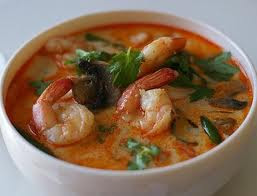
I took a very bold step this week and invited one of my Portuguese friends to try my version of a staple here in the
Algarve. My local cooking is improving but my Portuguese is still
embarrassingly bad. This is a style of soup you will virtually find in every Portuguese household, restaurant or snack bar and was one of the first things that made me fall in love with the country. It is eaten all year round and delicious accompanied by the local wood fired baked bread. I have taken the liberty of adding garlic and
coriander, which is not strictly authentic, but does carry very well with the flavour of the carrots and potatoes.
Portugal has endured a very turbulent history and has had foreign occupation since time began. Living in this country makes me feel a little compelled to inform the reader of a brief time line of its trials and tribulations and makes me feel proud that it has become the safe and secure little piece of paradise that it is today.
Portugal sits in Europe's most south western part of the continent, with Spain surrounding it's north and east. The cuisine is not to be confused with it's neighbour, although at one time shared the same domain, but has it's own distinct style and taste due to it's cultural and historical background. To the south and west is the Atlantic Ocean and enjoys a climate similar to Mediterranean countries, making it very favourable conditions for Fig, cork and olive trees to grow. Portugal entered the European Union in the 1980s and subsequently embarked on exporting it's superb olive oil - now ranked 8
th in the world.
Portugal has been inhabited since
pre-historic times with Neanderthal and has Paleolithic art, which suggests it is one of the earliest civilisations of Europe. Tribal hunter gatherers occupied the valley of the Tagus River during the Palaeolithic period, around 7000 BC, this is supported by archaeological remains of oxen, deer, sheep, horses, pigs, and various shellfish, which have been excavated and date to this time.
Celts, Phoneticians, Carthaginians, Romans,Visigoth, Berber and Muslims have all occupied the peninsula at various times, bringing with them their various
culinary influences. Between 711 and 1492, which they called Al-
Andalu. There was constant conflict with the northern Christian kingdoms and in 1085 Alfonso VI of
Castile The capture of Toledo in 1085 by Alfonso VI of
Castile led to Moorish decline and by 1236, after the fall of Cordoba, the only territory ruled by Muslims was the Kingdom of Granada in Spain. Alfonso III conquered the
Algarve in 1249 and this concluded the Portuguese
Reconquesta. Granada then became a tributary state to the Kingdom of
Castile, ruled by Ferdinand III. The surrender by Muhammad XII of Granada occurred on January 2, 1492 to Ferdinand and Isabella, "The Catholic Monarchs" (and famous parents of Katherine of
Aragon).
The Portuguese Empire was the first global empire in history and is the earliest and longest lived of all the modern European colonial empires, lasting close to six centuries, from the capture of
Ceuta in 1415 to the handover of
Macau in 1999.
 Here's how to make tandoori chicken, a British....I mean Indian favourite
Here's how to make tandoori chicken, a British....I mean Indian favourite











































